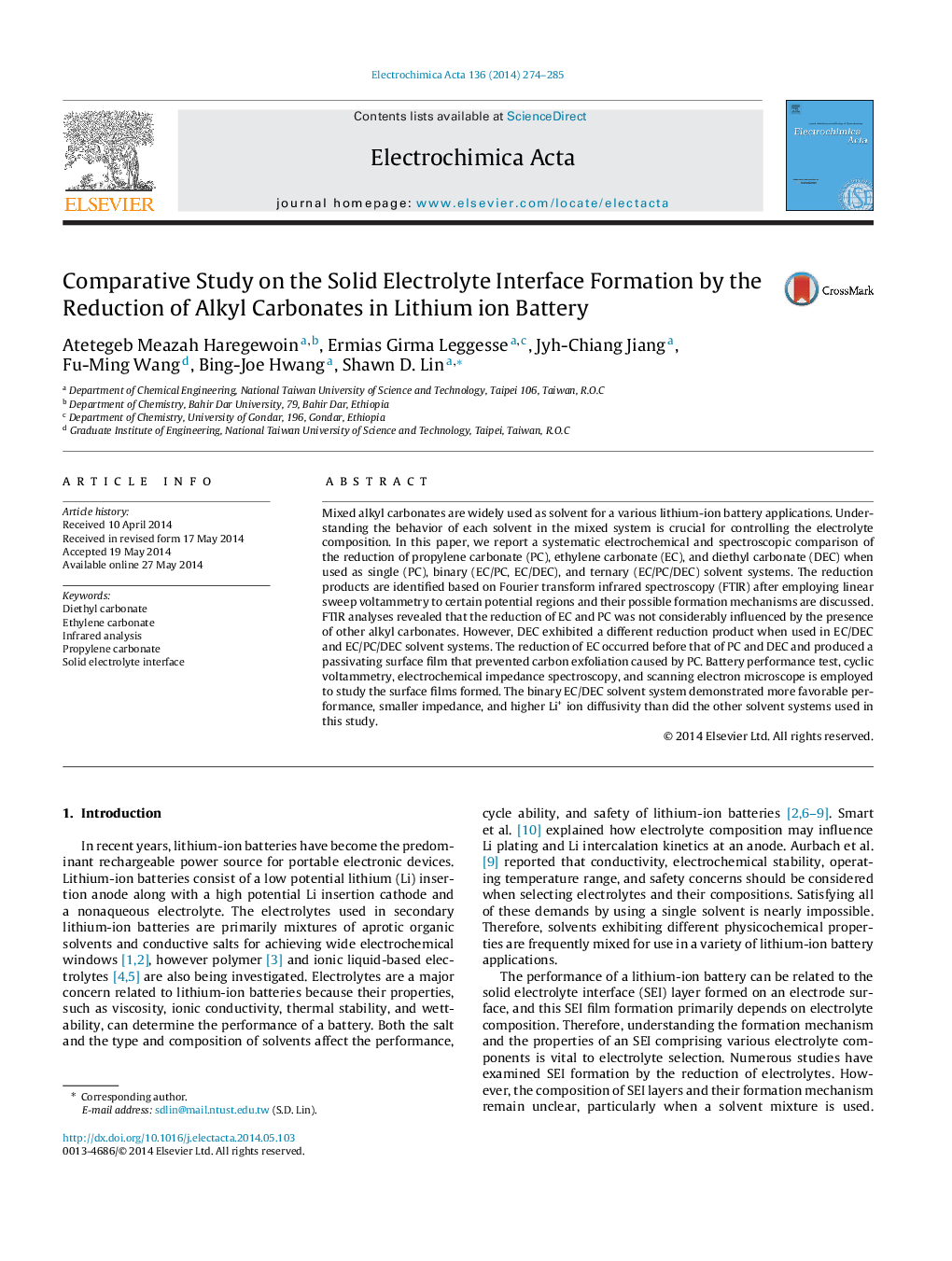| Article ID | Journal | Published Year | Pages | File Type |
|---|---|---|---|---|
| 185412 | Electrochimica Acta | 2014 | 12 Pages |
Mixed alkyl carbonates are widely used as solvent for a various lithium-ion battery applications. Understanding the behavior of each solvent in the mixed system is crucial for controlling the electrolyte composition. In this paper, we report a systematic electrochemical and spectroscopic comparison of the reduction of propylene carbonate (PC), ethylene carbonate (EC), and diethyl carbonate (DEC) when used as single (PC), binary (EC/PC, EC/DEC), and ternary (EC/PC/DEC) solvent systems. The reduction products are identified based on Fourier transform infrared spectroscopy (FTIR) after employing linear sweep voltammetry to certain potential regions and their possible formation mechanisms are discussed. FTIR analyses revealed that the reduction of EC and PC was not considerably influenced by the presence of other alkyl carbonates. However, DEC exhibited a different reduction product when used in EC/DEC and EC/PC/DEC solvent systems. The reduction of EC occurred before that of PC and DEC and produced a passivating surface film that prevented carbon exfoliation caused by PC. Battery performance test, cyclic voltammetry, electrochemical impedance spectroscopy, and scanning electron microscope is employed to study the surface films formed. The binary EC/DEC solvent system demonstrated more favorable performance, smaller impedance, and higher Li+ ion diffusivity than did the other solvent systems used in this study.
